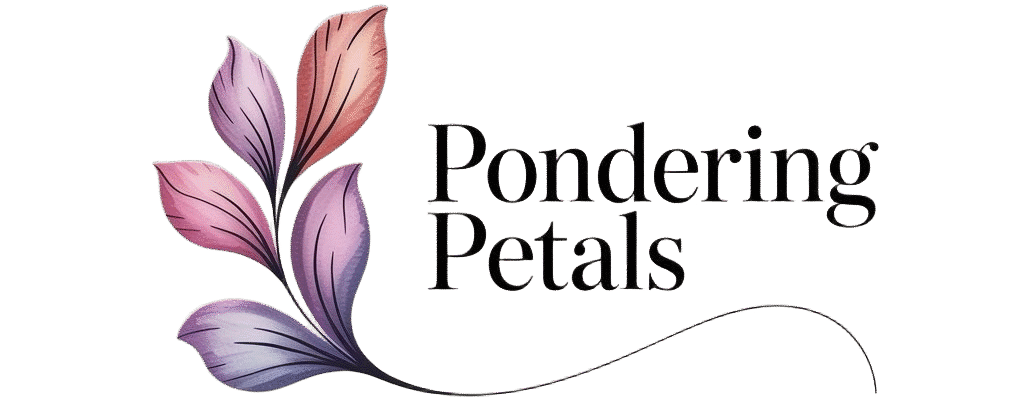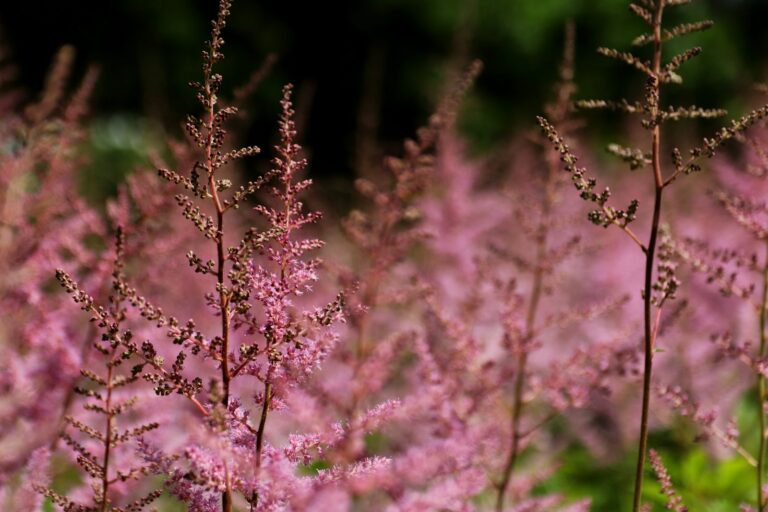Astilbe as Cut Flowers: Harvesting & Arrangement Guide
Your astilbe stems last seven days in the vase while your neighbor’s reach fourteen days with identical varieties. The difference stems from harvest timing at 50% bloom versus 75% bloom combined with immediate placement in 130°F acidified solution[1]. Here’s how to maximize vase life and create stunning arrangements.
Astilbe gives deep, feathery plumes in the colours of red, white, and pink from May to August[3]. The light blooms and the easy-flowing flowers turn normal bouquets into elegant creations. Professional florists appreciate astilbe as both line material and filler in summer arrangements[3].
Why Astilbe Stands Out as a Cut Flower
The texture sets astilbe apart from the other cut flowers. For the structured arrangements you see below, feathery plumes bring softness and movement to the arrangement, while vertical stems create natural height. This pairing is as successful in romantic wedding bouquets as anything and contemporary minimalistic designs.
Harvesting Astilbe at Peak Bloom
Harvest astilbe when one-half to three-quarters of the flowers are open and uppermost buds are colored[1]. Cutting too soon generates blooms that never entirely mature, and waiting too long reduces vase life. Open up the bottom 25% of the inflorescence with well-puffy buds displaying color at the tip[2].
Early morning cuts give the longest life in vase because stems contain maximum water content at that time.
Best Cutting Practices
Early morning cuts give the longest life in vase because most water content comes from stems[4]. Shave on clean and sharp shears at dawn so as not to crush the stem tissues and bacteria[4]. Cut at 45-degree angles to allow more surface area for absorption.
Conditioning Techniques for Maximum Vase Life
Immediately place cut stems in a 130°F acidified solution[1][2]. Laying stems dry for even a few seconds drastically decreases vase life. The warm water moves up stems more quickly than the cold water, inhibiting bacterial growth, and acidity discourages bacterial growth. Reduce decomposition by stripping lower leaves and placing stem into water.
Ethylene Sensitivity Management
Astilbe flowers are sensitive to ethylene gas which leads to premature wilting[1]. Antiethylene compounds such as EthylBloc extend the life of vase’s pretreatment. Avoid moving near ripening fruit as it ripens, and a shred of ethylene gas condenses.
Professional Storage Methods
Keep cut astilbe in 33-40°F cooler for 7-10 days in a bactericide soluble solution[1]. Paper sleeves do not preserve moisture, the polyethylene sleeves do better when in a cold storage solution. Escape stems out of storage, re-cut at an angle before arranging.
Commercial flower food improves the quality of astilbe vase life and when mixed with vase water the product is extended[1]. These preservatives are sugar for nutrition; acidifiers to lower pH; biocides to prevent bacterial growth. Shift the water every two to three days and recut stems to keep water uptake up[5].
Expected Vase Life and Care
Astilbe is preserved in the vase for 7-14 days with proper care[3]. This is better than tulips and iris but not roses or carnations. Longevity is best maximised by controlling temperature and drinking pure water.
| Care Factor | Requirement | Impact |
|---|---|---|
| Harvest timing | 50-75% bloom open | Maximum vase life |
| Water temperature | 130°F acidified | Optimal uptake |
| Storage temp | 33-40°F | Extends freshness 7-10 days |
| Water changes | Every 2-3 days | Prevents bacterial growth |
| Expected vase life | 7-14 days | With proper care |
Swiff stems in lukewarm water for approximately one hour[7]. The conditioning process is done to make sure that flowers are completely turgid before placing them. Water at room temperature goes much more efficiently through your stem than cool water fresh from the tap, and it works like a pump.
Remind yourself to keep finished setups out of immediate sun, heat, and fruit bowl[7]. At the same time, sunlight takes away colors of petals while heat expedites water loss through transpiration. The ethylene in fruit degrades the wilting stage with increasing concentrations even in low concentrations.
Pairing Astilbe with Other Flowers
Classic Romantic Combinations
Astilbe is a great partner with roses and spray roses for timeless romance[5]. The light plumes soften the rigid appearance of rose floral blooms and lend upward interest. This classic pairing goes well for both garden-style and formal choices.
Lay the peonies and astilbe on one another for lush, romantic bouquets[5]. Big ruffled peony blooms are focal points, and airy astilbe plumes fill the space and promote movement. The texture difference intensifies the effect on two flowers.
Bold Modern Pairings
I used to mix astilbe with dahlias for vibrant, saturated color[5]. The geometric shapes of dahlia ground such compositions; the soft material of astilbe has a way of shielding the designs from the overbearing, starchy rigidity. This pairing works great in late summer arrangements, when both flowers are at their most extreme.
Astilbe pairs beautifully with the stacked petals of ranunculus for warm and lyrical patterns[5]. The flowers exhibit similar soft, feminine qualities that create cohesive arrangements. Utilize astilbe to enhance shallow, rounded ranunculus blooms with higher lilies.
Contemporary Design Pairings
Pair astilbe and a clean calla lily to make the contrast striking[5]. These are juxtaposed with a series of beautiful, modern, architectural lines of calla lilies that blend easily with light feathery astilbe plumes. That makes it a great match for today’s weddings.
Popular flower pairings for astilbe arrangements:
- Roses and spray roses for timeless elegance
- Peonies for lush, romantic garden style
- Dahlias for bold, saturated summer color
- Ranunculus for soft, feminine designs
- Calla lilies for modern architectural contrast
- Hydrangeas for full-bodied arrangements
- Ornamental grasses for natural meadow movement
- Ferns for woodland texture
The rounded clusters of hydrangea work like a lush backdrop for the vertical plumes of astilbe[5]. Water demand and useful vase life are similar between the two flowers. This duo forms full-bodied, garden-style setups with diversified feeling.
For the additional vertical aspects, add ornamental grass seed heads and foliage[5]. The touch of grass on all fours is just right to match the very feathery shape of astilbe and the natural, meadow-based motion that the little branches offer. Design from loose, natural grass foliage for structure in organic designs.
Ferns make the woodland texture of astilbe arrangements more woodland[5]. The texture of the foliage is such that the designs become cohesive yet cohesive with the naturalistic design of a shade garden for the same. This pairing works particularly well in outdoor summer weddings.
Texture, color, and form should balance each other when designing with astilbe.
Texture, color, and form should balance each other when designing with astilbe. Complementary flowers should be made to look slightly different, and the soft presence should not overpower them. Use astilbe in mixed arrangements to fill holes, provide height or soften stronger edges.
Best Astilbe Varieties for Cutting
Pink and Peach Varieties
Peach Blossom Astilbe, soft peachy plumes over dark green foliage[5]. The beautiful pastel color comes to use in romantic, feminine designs. This variety offers a moderate height, which is appropriate for tall and compact arrangements.
Bold Red Varieties
Fanal Astilbe garnet red flowers are suitable for large, dramatic bouquets[5]. The deep color contrasts sharply with pale pink flower, white flower or pale pink flower. Dark green foliage is lush with dark greens that adds colour even before blooms even start to open up.
White Varieties
Bridal Veil Astilbe makes pure white but pure white, cloud-like spires and its great for wedding ceremonies[5]. The immaculate whitewash also fits into any color scheme and adds an inviting look. This range fits in with both rustic and refined designs styles.
Unique Foliage Varieties
Chocolate Shogun Astilbe has dark leaves and soft pink flowers[5]. There is an added visual interest due to the high contrast of foliage and flowers. Leverage the vivid foliage as an element of design – without flowers.
Compact Series
Visions Series includes small plants displaying stunning pomposity in red, white, pink – and purple shade[5]. The shorter stems are ideal for smaller plants and for centerpiece arrangements. And this series presents some good color variety from a single astilbe kind.
Montgomery Astilbe has dark and crimson red plumes over deep, dark green leaves[5]. This bright color makes for a focal point in summer petals. It adds good form and good color to the varietal material of the vase.
Drying Astilbe for Lasting Décor
It’s a lovely dryness of aromatics, preserves it nice and long months because they hold texture and very much of the delicate color[5]. Collect small batches of fresh cut stems when the flowers are nearly fully blown open. Close bundles with twine or rubber bands at the stem base.
Hang bundles upside down in a warm, dry, well-ventilated location out of direct sunlight[5]. During the drying process, darkness guards against color fading. Mold development on damp stems can be avoided with good air circulation.
Drying Timeline and Uses
Blooms that dry completely in only one to three weeks upon humidity[5]. Weekly check stems by feeling the thickness of flower plumes. Dried (not lightly) astilbe feels papery and crisp instead of soft or pliable.
Do Wreaths, Garlands, Christmas, and Dried Flower arrangements or dried bouquets, then fill with dried astilbe. Use dry Astilbe[5]. The plumes are particularly easy to fill with dried roses, lavender, baby’s breath, and fancy grasses for a romantic, old world feel. Consider coupling dried astilbe with a bold structural bloom such as protea or eucalyptus pods for a more contemporary look.
The Meaning Behind Astilbe
Cut astilbe flowers and leaves produce very nice fresh arrangements with a vase life of four to twelve days[6]. Depending on variety and harvest timing and post-harvest care are common. With proper conditioning, some vase life differs between no match and an impressive one.
Astilbe is a sign of patience and devotion for a lover[3]. This was, of course, recognised and, thus, astilbe took on an aesthetic significance in the Victorian flower vocabulary of flowers that recognized this, and hence meant things like astilbe for events and the flower of a petite for a loved one. This imagery makes wedding bouquets and anniversaries more decorative.
Creating Professional-Quality Arrangements
Astilbe is a dependable cosmetic choice for summer cutting gardens. Success can only be achieved if you have an understanding of the best season for harvest (50-75% bloom), as well as the speed of conditioning in a warm acidified solution and proper storage conditions (33-40°F). The result is feathery plumes which last seven to fourteen days and have an aesthetic texture well-suited for roses, peonies, modern designs. Choose those varieties of your choice and cut stems at a time when blooms are at their best, as listed above for professional-quality preparations.
Key Sources:
[2] Astilbe Growing Guide | Farmer Bailey Inc.
[3] Astilbe – Vase Life, Cut Flower Uses & More | Floral Design Institute
[4] Astilbe: A Great Cut Flower for Elegance and Texture | Fabulous Florals
[5] How to Use Astilbe in Gardens & Bouquets | Nature Hills
[6] Planting, Growing, & Caring for Astilbes | The Old Farmer’s Almanac
[7] Astilbe Care Guide: Keep Your Bouquets Beautiful | KS Flowers
Lily Morgan is a home gardener. She grows houseplants and designs small-space gardens. She shares what she learns from experience. Lily offers simple, practical tips for plant lovers. Her goal is to help others garden with confidence. She wants to help them grow, one leaf at a time.


